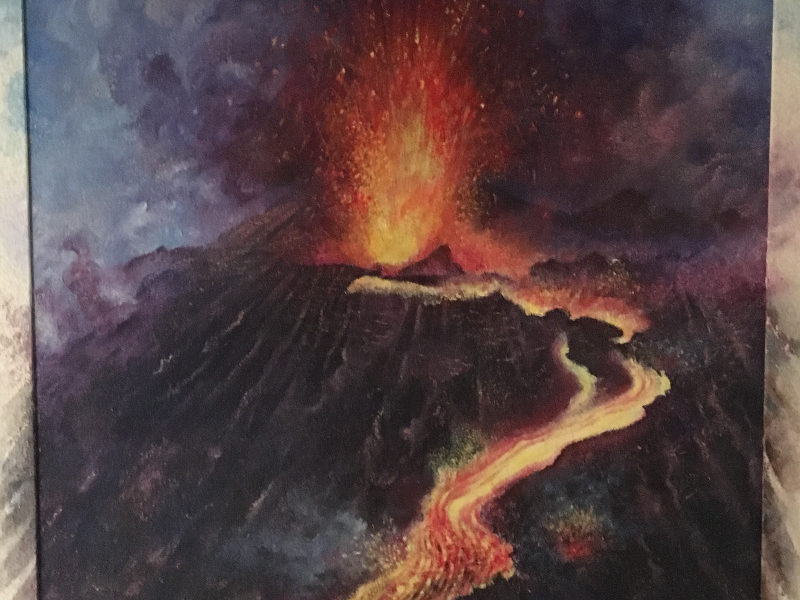With Ronja on volcanoes

38° 28′ 40.2312” N 14° 57′ 49.9932” E
22th of April
“Lipari is a mood rather than a place,” skipper’s wife philosophes already after only one day on the island of Lipari, and after five full days on the liparic islands, she insists that we have encountered not one single bad thing on the islands. Nothing at all. The islands have it all.
Hiking routes, excursion boats, ancient monuments, volcanoes, spring flowers in all conceivable colors and intoxicating fragrances of jasmine, wild roses, thyme, rosemary and … petrol for scooters. Spring is in full and succulent bloom on Lipari and on the other six islands of the archipelago, which most call “the Aeolian islands”, but as we choose for some reason to call “the Liparic islands”, even as the name “the Aeolian islands” is historically much more interesting. This name comes from the Greek wind god Aeoulus, who – according to Homer – gave Odysseus all the opposing winds bound in a sack. His crew thought that the sack contained a treasure, opened it and thus founded the reputation of the area for having unpredictable winds.
After a full day of sailing from Cefalù in Sicily, where we encounter flocks of dolphins and a single sea turtle swimming in 1400 meters deep water and 50 kilometers to the nearest coast, Ronja is now lying in the moors of Pignataro, which is the only of the ports and the pontoones on the main island of Lipari, which are ready for the season already here in mid-April.
Alone this port, Pignataro, is balm for the soul. Here is beautiful, and here is peace. We hold our siesta on the back deck with a pillow below the neck, while we lavishly look at the lush hillsides around the harbor listening to the fishermen’s talk while fining yarn after morning fishing, only interrupted by some excited shouts, when the fishermen occasionally disagree.
Ripari is the largest of the islands in the archipelago. But we also visit the islands of Panarea and Stromboli, especially the latter makes a huge impression with its constantly sizzling volcano. Unlike many other volcanoes, which for a long time – ten years or a hundred years – build up to a huge explosion, Stromboli is in constant activity and every ten minutes – or something similar – it slips a cloud of gas accompanied by a thunder-like rumble. When the darkness falls on, we can see, that lava is spraying in the air and are afterwards rolling glowing down the mountain side.
The constant volcanic activity has given Stromboli reputation as the Mediterranean lighthouse, and even as the world’s oldest lighthouse, which, with its location, manages to lead sailors down to the Messina Strait.
And how strange it is to think, that Stromboli raises almost one kilometer up from the sea’s surface, but it also stretches another two kilometers deep into the sea. It’s a huge volcano. A conical rock, three kilometers high, standing on the bottom of the ocean, with just a third rising above the surface of the water, and even it draws its explosive power and its magma from even deeper into the earth, than the three kilometers! In my next life, I want to be a volcanologist!
A good advice: If you are heading down the Messina Strait either through Sardinia and Sicily or along the mainland of Italy, take a detour to the volcanic islands Vulcano and Stromboli, and put in if you like a stay at Lipari.
It’s a mood rather than a place 🙂